Related Research Articles

John Joseph Cahill, also known as Joe Cahill or J. J. Cahill, was a long-serving New South Wales politician, railway worker, trade unionist and Labor Party Premier of New South Wales from 1952 to his death in 1959. Born the son of Irish migrants in Redfern, New South Wales, Cahill worked for the New South Wales Government Railways from the age of 16 before joining the Australian Labor Party. Being a prominent unionist organiser, including being dismissed for his role in the 1917 general strike, Cahill was eventually elected to the Parliament of New South Wales for St George in 1925.

Norman John Oswald Makin AO was an Australian politician and diplomat. He was an Australian Labor Party member of the Australian House of Representatives from 1919 to 1946 for Hindmarsh, from 1954 to 1955 for Sturt, and from 1955 to 1963 for Bonython. He was Speaker of the Australian House of Representatives from 1929 to 1932 and served as Minister for the Navy, Minister for Munitions (1941–1946) and Minister for Aircraft Production (1945–1946) under John Curtin, Frank Forde and Ben Chifley. He was the first President of the United Nations Security Council in 1946, and served as Ambassador to the United States from 1946 to 1951.
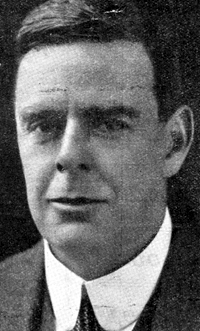
Arthur Gibson Manning was an Australian politician who served in the House of Representatives from 1922 to 1928, representing the Division of Macquarie for the Nationalist Party. He was previous a member of the New South Wales Legislative Assembly from 1917 to 1920.
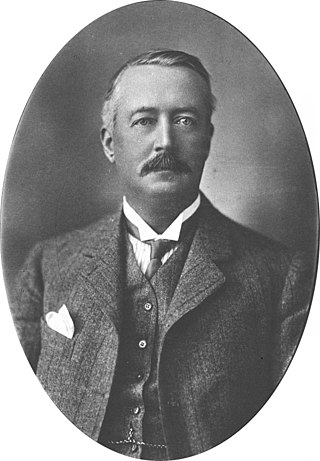
Henry Luke White was a wealthy grazier, and a keen philatelist, book collector, amateur ornithologist and oölogist of Scone, New South Wales, Australia.
John Whiteley King, commonly known as Whitely King, was General Secretary of the Pastoralists' Union of New South Wales and its successor, the Graziers' Association of New South Wales, from its inception in 1890 to 1901. He was responsible, among other duties, for enforcing pay and conditions for shearers, on behalf of the owners, and supported the owners against the unionists during several strikes by recruiting non-union "scab" labour.

The Australian Institute of Architects, officially the Royal Australian Institute of Architects, is Australia's professional body for architects. Its members use the post-nominals FRAIA (Fellow) and RAIA. The Institute supports 14,000 members across Australia, including 550 Australian members who are based in architectural roles across 40 countries outside Australia. SONA is the national student-membership body of the Australian Institute of Architects. EmAGN represents architectural professionals within 15 years of graduation, as part of the Australian Institute of Architects.
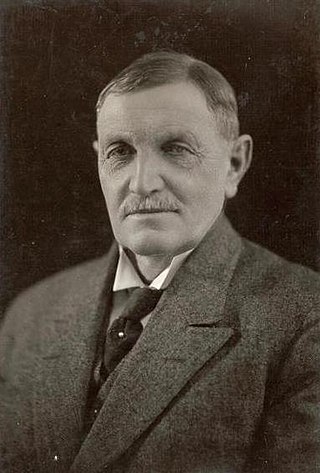
William Wilson Killen was an Australian politician.
Alfred Edgar Hunt, generally referred to as A. E. Hunt, was an Australian politician and a member of the New South Wales Legislative Council for 13 years.
Frederick Henry Tout was an Australian solicitor, pastoralist, businessman and politician who was a member of the New South Wales Legislative Council for 14 years. He was president of the Bank of New South Wales.

The Union Bank of Australia was an Australian bank in operation from 1837 to 1951.
Edward Quin was a noted pastoralist in the north-west of New South Wales, Australia, who represented Wentworth in the New South Wales Legislative Assembly
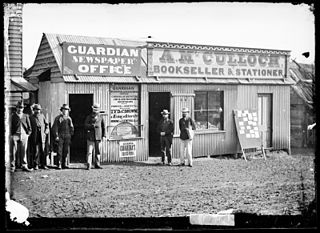
The Gulgong Guardian was an English language newspaper published in Gulgong, New South Wales, Australia from 1871 to 1873.
Urisino Station most commonly known as Urisino is a pastoral lease that has operated as both a sheep station and a cattle station in outback New South Wales.
Elsinora Station most commonly known as Elsinora is a pastoral lease that has operated as both a sheep station and a cattle station in outback New South Wales. It is situated approximately 160 kilometres (99 mi) north of White Cliffs and 240 kilometres (149 mi) north west of Bourke close to the Queensland border.
Francis Rawdon Chesney Hopkins was an Australian pastoralist and playwright, born in India.

The Municipality of Granville was a local government area in the Western region of Sydney, New South Wales, Australia. The municipality was proclaimed as the Borough of Granville on 20 January 1885. It included the modern suburbs of Granville, South Granville, Camellia, Rosehill, Clyde and parts of Harris Park, Guildford and Merrylands. From 1 January 1949, the council was amalgamated into the City of Parramatta, with the passing of the Local Government (Areas) Act 1948.
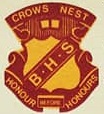
Crows Nest Boys High School is a former high school located at 365 Pacific Highway in the Sydney suburb of Crows Nest, New South Wales, Australia. It was a boys' high school operated by the New South Wales Department of Education with students from years 7 to 12. The school was first established in 1883 as St Leonards North Public School. However, the school was declared surplus to the needs of the department and officially closed in 1992. The school and its heritage-listed buildings are now the campus of North Sydney Girls High School.

Sir Clarence Roy McKerihan, also known as Roy McKerihan or C. R. McKerihan, was an Australian banker who served as a commissioner and President of the Rural Bank of New South Wales for 27 years from 1933 to 1961.

Hay War Memorial High School is a public co-educational secondary day school, located on Pine Street in central Hay, a town located in the western Riverina region of New South Wales, Australia. The school is operated by the NSW Department of Education with students from Year 7 to Year 12. The school was originally established on 1 January 1918 at the Hay Public School campus, but moved to a separate purpose-built site on Anzac Day, 25 April 1923, half paid for by public subscription from the citizens of Hay, as the town's war memorial to the service of Hay and district citizens in the First World War.
The Farmers' and Settlers' Association of New South Wales was an umbrella organisation of farmers' and selectors' associations in New South Wales, founded in 1893.
References
- ↑ "The Progressive Party". Newcastle Morning Herald and Miners' Advocate . No. 14, 020. New South Wales, Australia. 14 October 1919. p. 4. Retrieved 1 December 2023– via National Library of Australia.
- ↑ "The Shearers' Union and the Pastoralists' Union". The Sydney Morning Herald . No. 16, 339. New South Wales, Australia. 6 August 1890. p. 3. Retrieved 1 December 2023– via National Library of Australia.
- ↑ "Graziers' Association". The Sydney Stock And Station Journal . Vol. XXVIII, no. 44. New South Wales, Australia. 8 September 1916. p. 6. Retrieved 1 December 2023– via National Library of Australia.
- ↑ "Working for You". The Sydney Stock and Station Journal . Vol. XXIX, no. 74. New South Wales, Australia. 28 December 1917. p. 5. Retrieved 2 December 2023– via National Library of Australia.
- ↑ "Death of Mr John Mair". The Sydney Stock and Station Journal . Vol. XXXV, no. 68. New South Wales, Australia. 7 December 1923. p. 13. Retrieved 2 December 2023– via National Library of Australia.
- ↑ "Some Country Show Presidents, N.S.W." The Land (newspaper) . No. 1257. New South Wales, Australia. 17 July 1935. p. 49. Retrieved 2 December 2023– via National Library of Australia.
- ↑ "Secretary For Graziers' Federal Council". The Northern Star . New South Wales, Australia. 30 March 1946. p. 5. Retrieved 2 December 2023– via National Library of Australia.
- ↑ "Notable Australian". The Telegraph (Brisbane) . No. 12, 608. Queensland, Australia. 17 April 1913. p. 8. Retrieved 3 December 2023– via National Library of Australia.
- ↑ "Death of Mr Philip Oakden". The Sydney Wool and Stock Journal . Vol. XXVI, no. 1541. New South Wales, Australia. 25 February 1916. p. 14. Retrieved 3 December 2023– via National Library of Australia.
- ↑ "Mr W. F. Jaques". The Sydney Morning Herald . No. 30, 873. New South Wales, Australia. 14 December 1936. p. 16. Retrieved 2 December 2023– via National Library of Australia.
- ↑ "Death of Mr J. Mackay". The Sunday Herald (Sydney) . No. 3. New South Wales, Australia. 6 February 1949. p. 6. Retrieved 3 December 2023– via National Library of Australia.
- ↑ "Former President of Graziers Association". The Dubbo Liberal and Macquarie Advocate . Vol. 41, no. 2. New South Wales, Australia. 5 July 1950. p. 1. Retrieved 3 December 2023– via National Library of Australia.
- ↑ "Mr James Walker". Daily Advertiser (Wagga Wagga) . New South Wales, Australia. 21 June 1935. p. 4. Retrieved 3 December 2023– via National Library of Australia.
- ↑ "Two Graziers Leaders in One Family". The Daily Telegraph . Vol. 5, no. 136. New South Wales, Australia. 24 July 1935. p. 9. Retrieved 3 December 2023– via National Library of Australia.
- ↑ "Eric Lyle Killen (1892–1955)" . Retrieved 3 December 2023.
- ↑ "12 Australians in Honours List". The Canberra Times . Vol. 30, no. 8, 733. Australian Capital Territory, Australia. 2 January 1956. p. 2. Retrieved 4 December 2023– via National Library of Australia.
- ↑ "Phillip Arundell Wright". Smith's Weekly . Vol. XXXII, no. 6. New South Wales, Australia. 8 April 1950. p. 15. Retrieved 3 December 2023– via National Library of Australia.